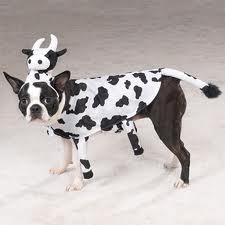 As parents, we are sometimes frustrated with the behavior of our children, and sometimes exasperated by our dogs. However, when the interaction between them is the issue, it becomes all the more difficult to correct.
As parents, we are sometimes frustrated with the behavior of our children, and sometimes exasperated by our dogs. However, when the interaction between them is the issue, it becomes all the more difficult to correct.
Often we need to change the relationship our kids and pup have developed. Pups can easily see children as playmates. Children move a lot, move quickly, and use higher voices than adults. A high level of emotion is considered a weakness to a dog. Children must develop leadership skills in their interaction with the pup to communicate appropriately.
Making sure your child is interacting appropriately with your pup is crucial. With very young children, all interaction with the pup should be supervised. Children need to learn to respect the pup as well. Children should not be allowed to pull, grab, poke or step on the pup. To teach them to properly pet, hold the child’s hand and calmly pet on the back or side with long strokes. In addition, when the child is not around, the adults should gently pull, grab, and poke to help desensitize the pup.
The first key aspect of our training philosophy is mastering some calming techniques with your pup. The attitude and energy that we use to calm our pups need to come directly from its human. A calming technique is to take a deep breath, freeze-motion, and first calm yourself. This is crucial in calming your pup, and in turn, will calm the situation.
Start by teaching your pup how to get to a calmer state. If you are beginning this while your pup is still young (under 6 months or so), you can hold your pup to calm it. This is not petting. This is holding them close to your calm heart and releasing them when they relax into your firm hold. With an older pup or dog, you can lean the pup against your leg and place your hand over his body near the dog’s heart, breathe deeply, and possibly use a shhhhh sound to calm yourself and your pup. Remember, this is about your attitude and energy, not about physical control. You want to begin these exercises when your pup is relatively calm and work up to calming from a more excited state once your pup is familiar with the expectations.
The second aspect is respect. Teaching your pup to respect each person in the family is essential. When a pup respects, the pup will give the person space. Developing respect begins with leadership. Having your pup work for your kids will need to become a daily occurrence. Work can be obedience commands such as sit, down, stay, as well as structured games and participating in the feeding ritual. For example, after the adults have taught a pup a command and the pup is consistent with the command, then allow the child to give the command (sit) with a reward to the pup. Add more commands daily and have several short (60 to 90 seconds) training sessions numerous times a day. We call it the five-treat rule: give the child five treats and have the child give five (or more) commands with rewards.
Developing leadership, mastering calming techniques, and having children earn respect will lead to proper interaction, and quite possibly, change the dynamic between the child and pup, leading to a more balanced relationship.




